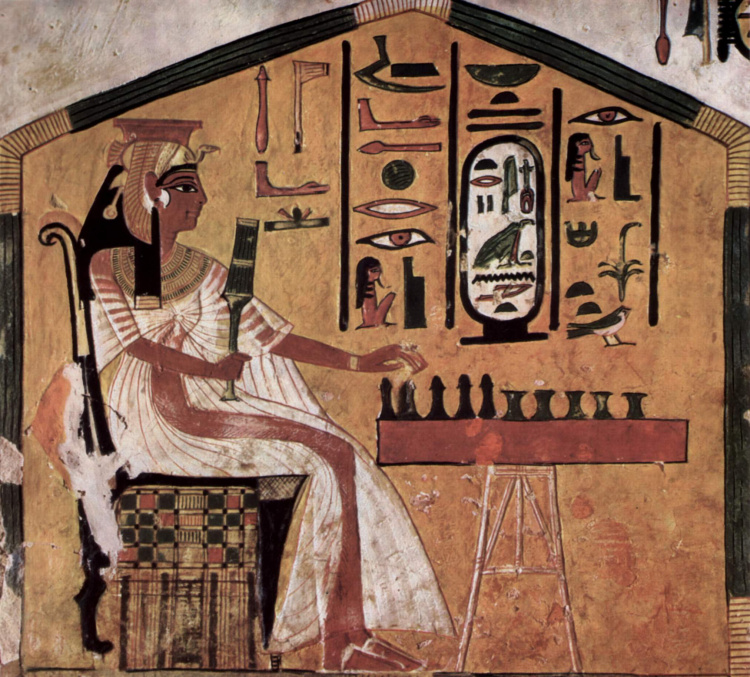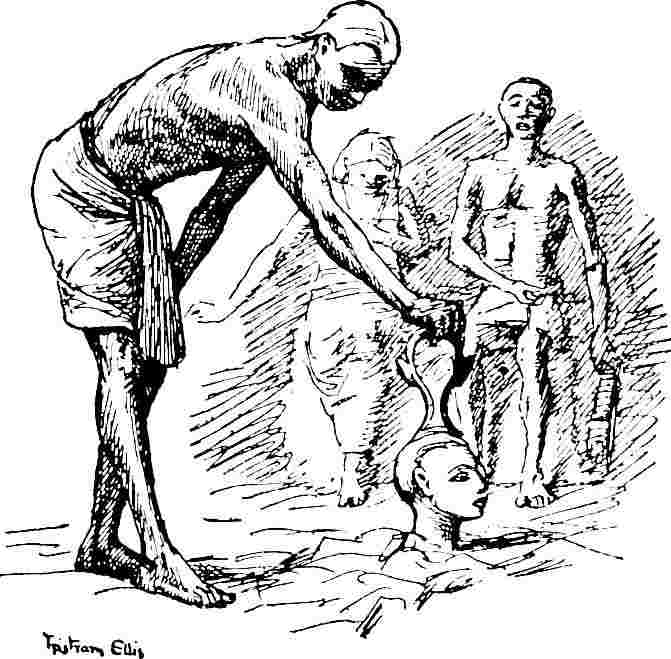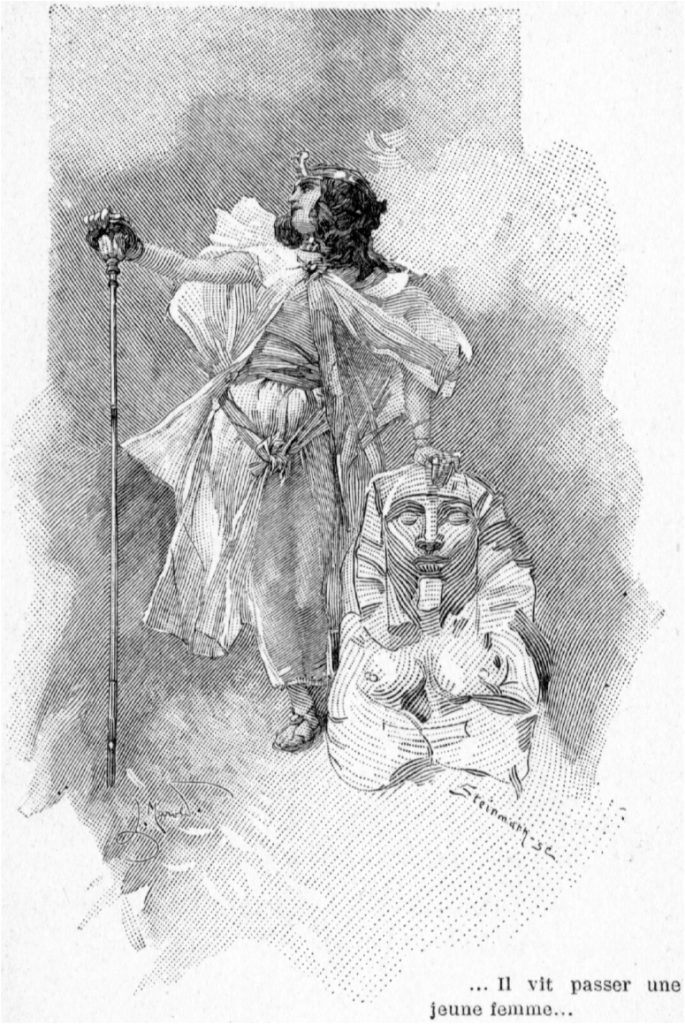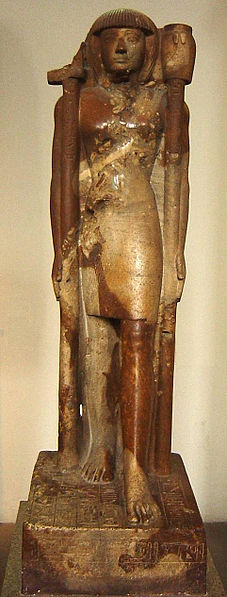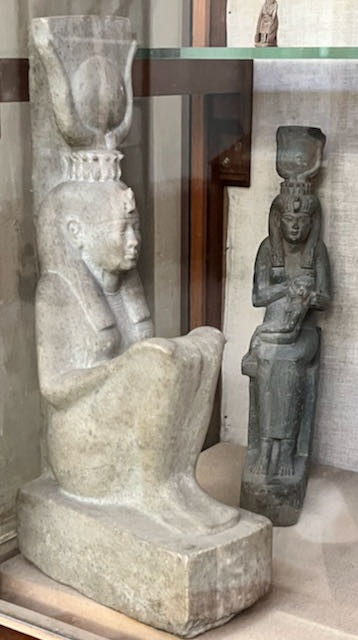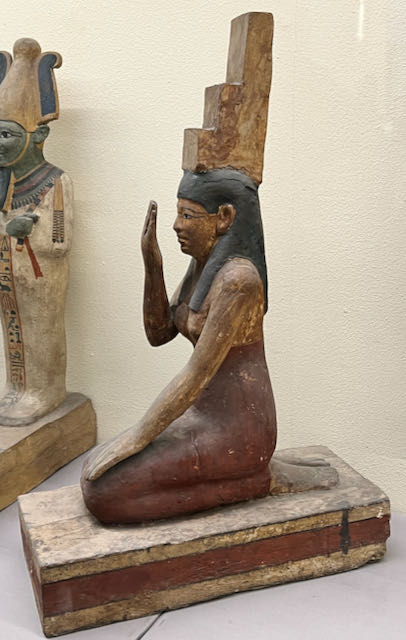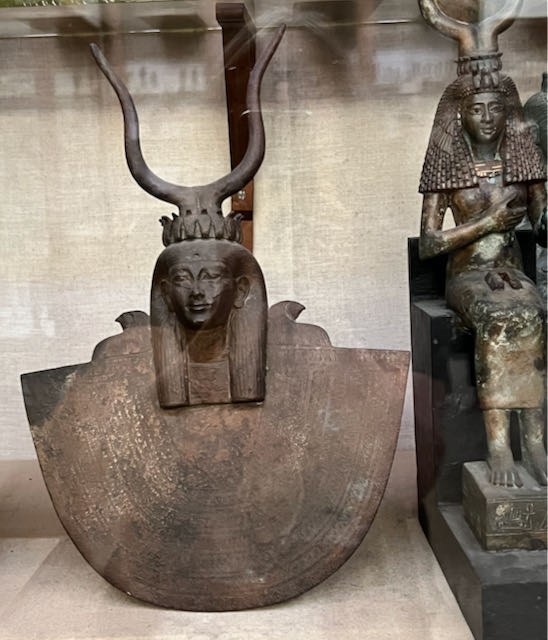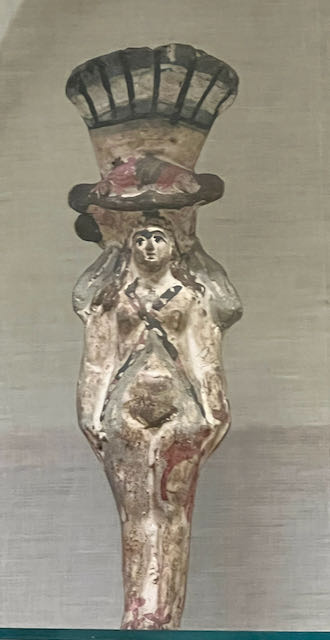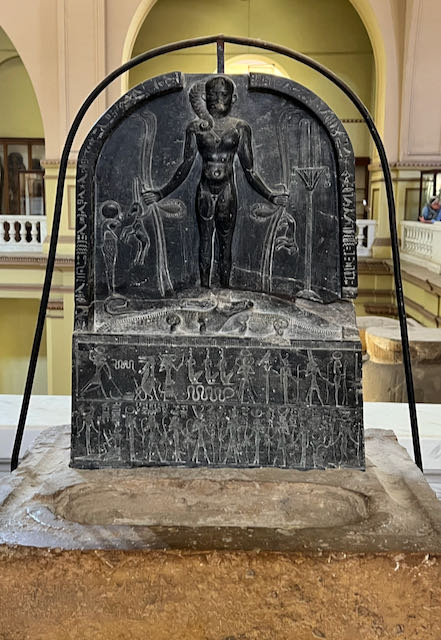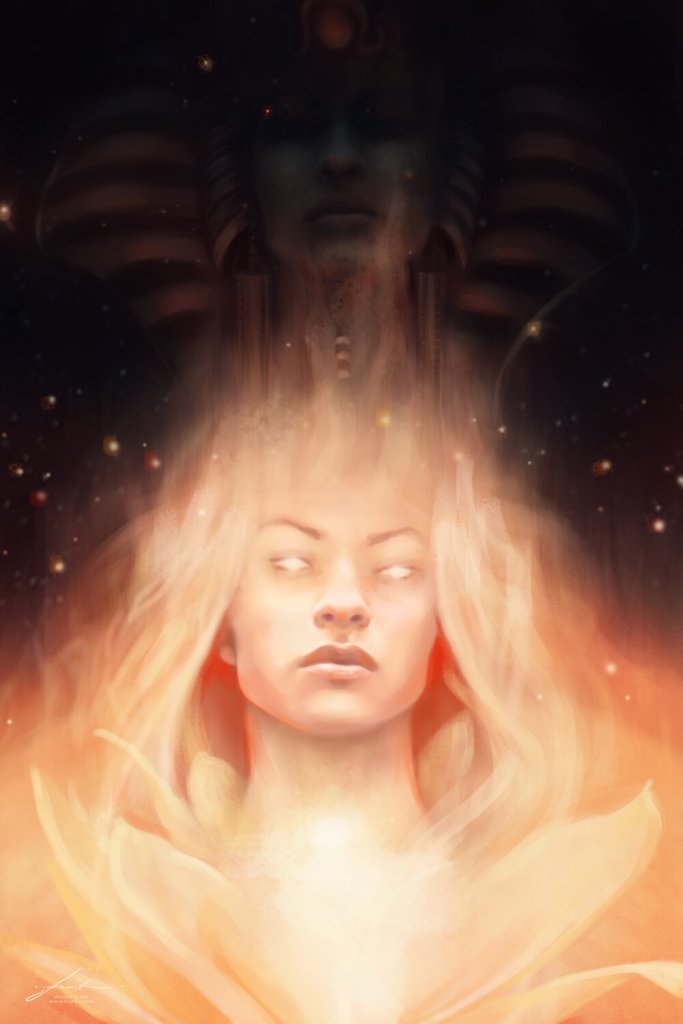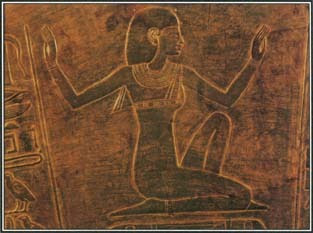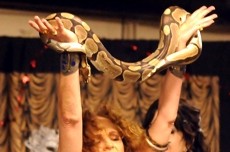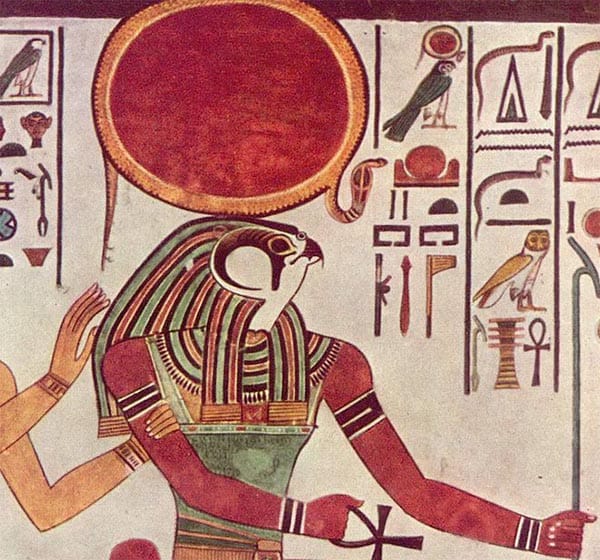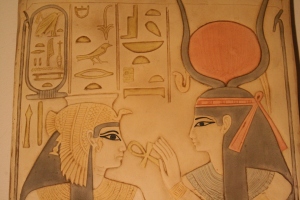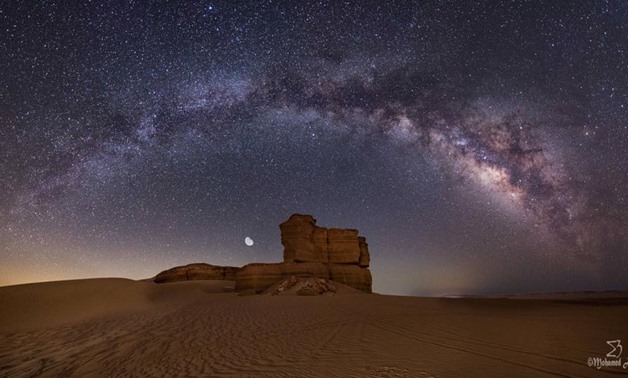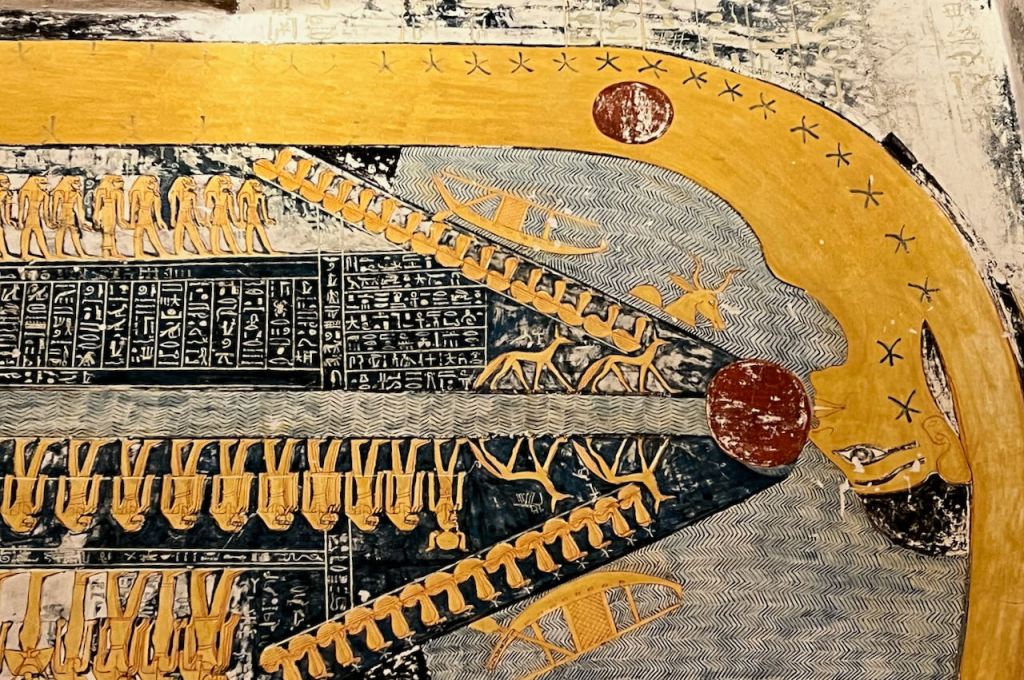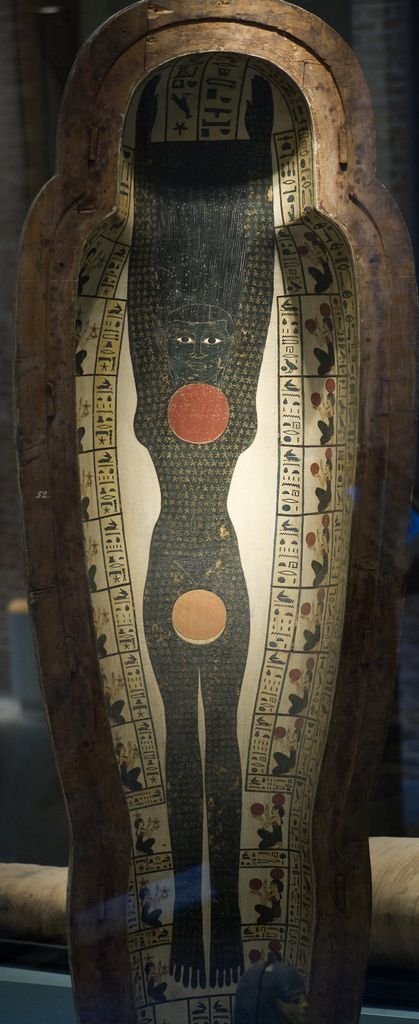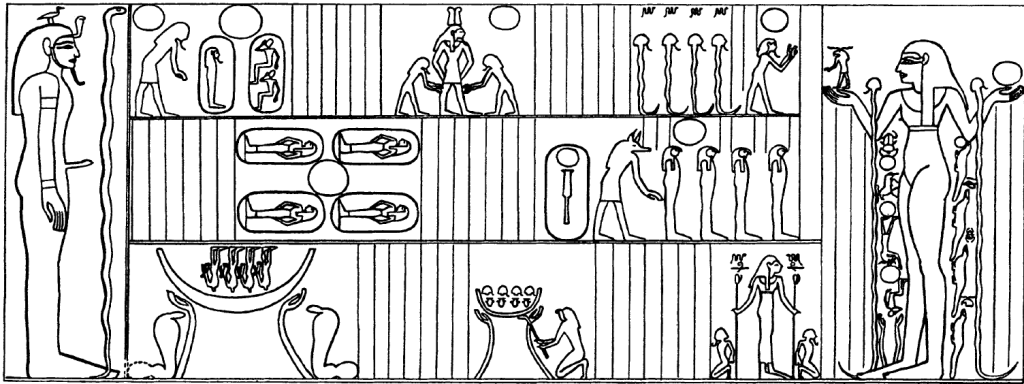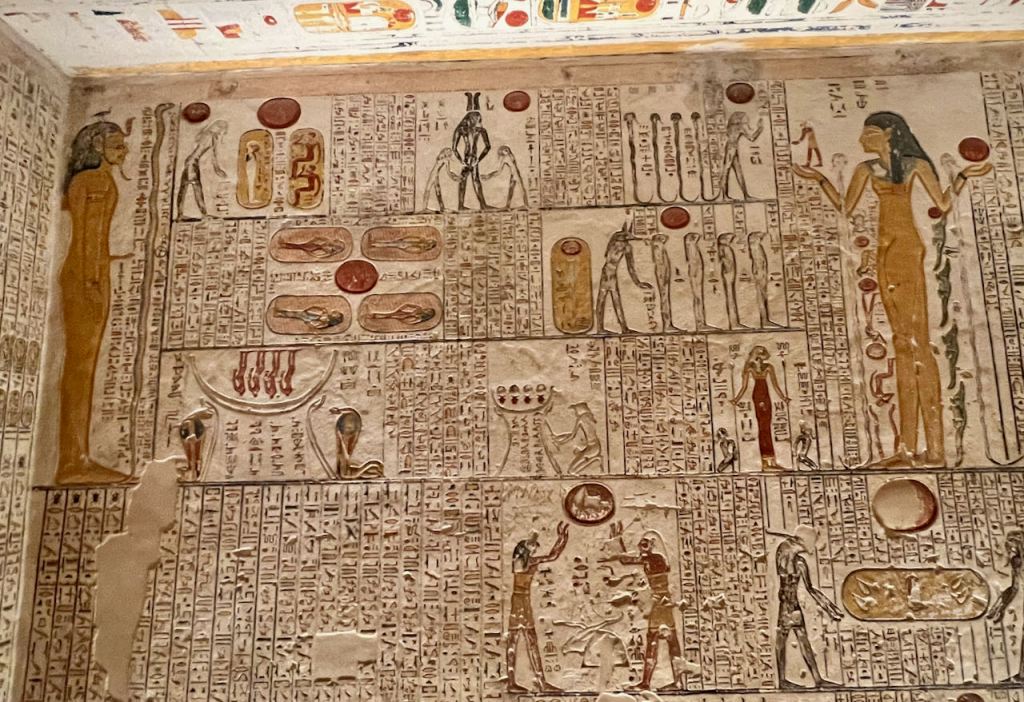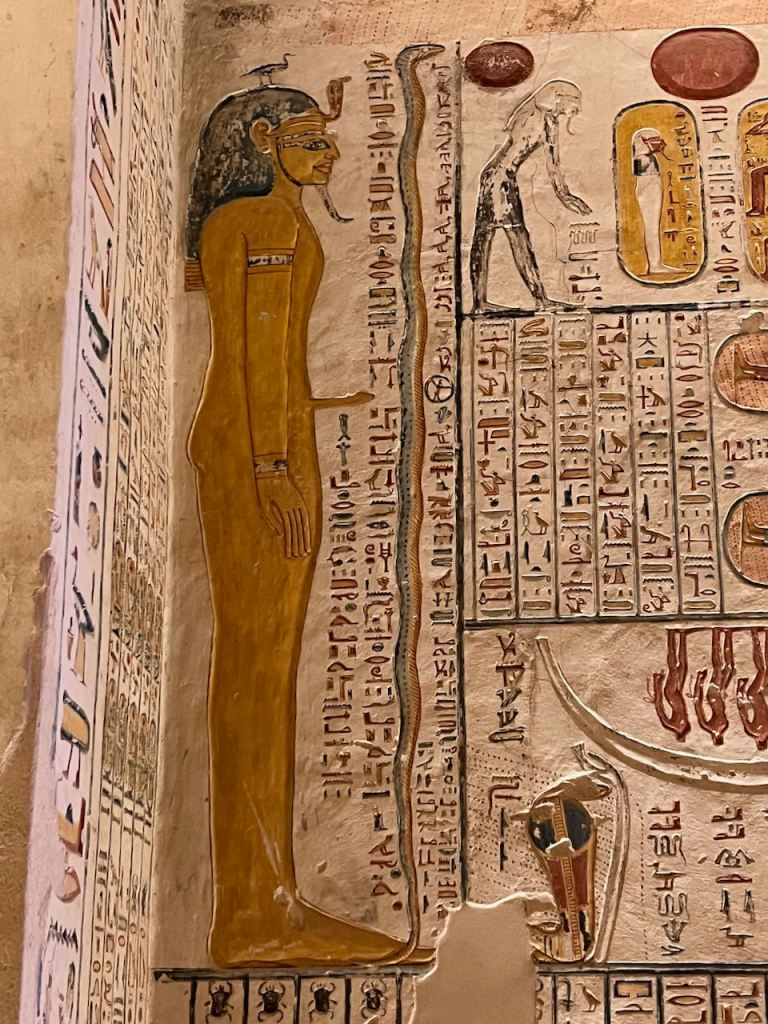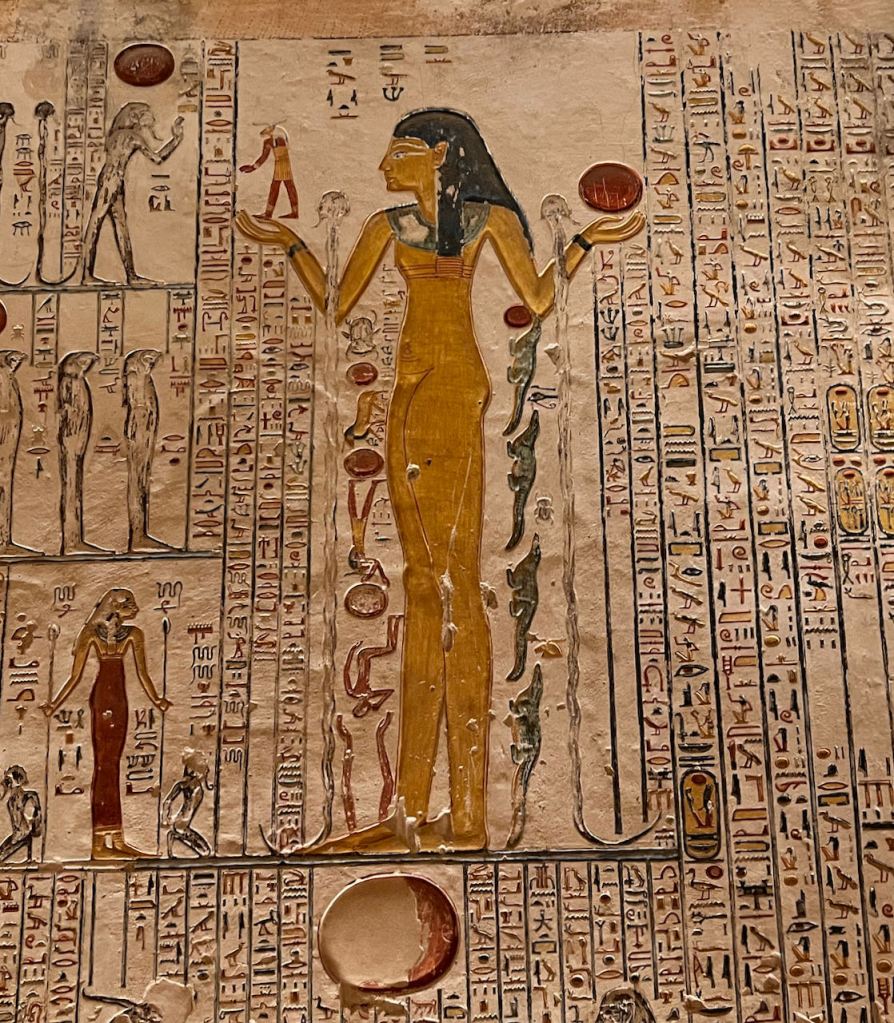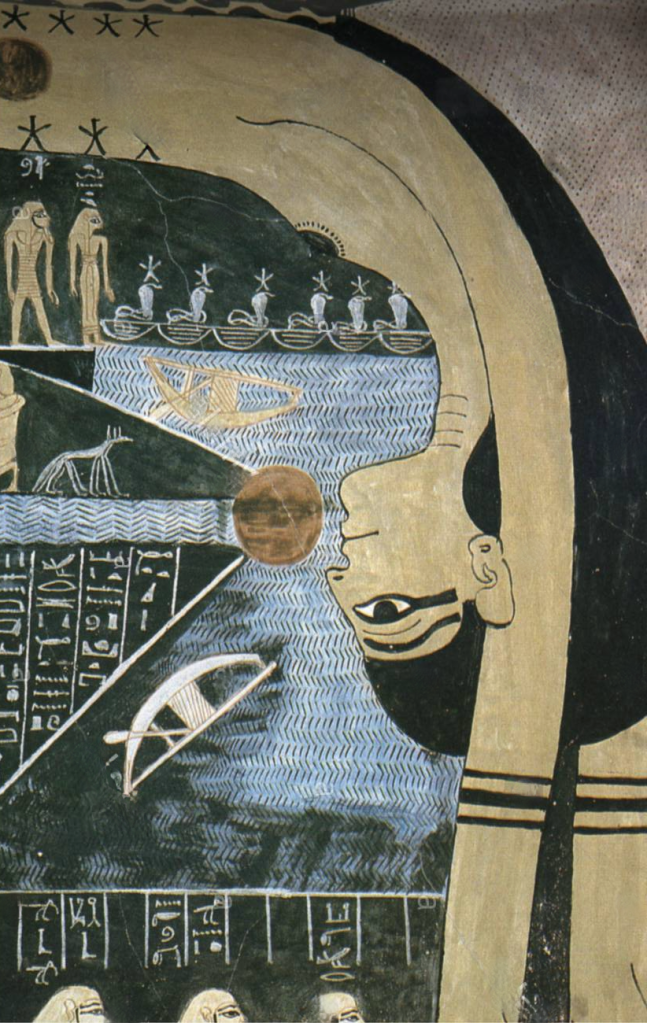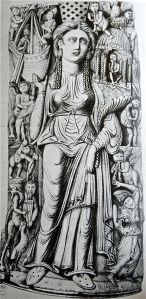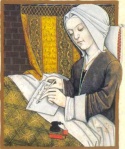We learned several weeks ago that one of the things said of Isis at Denderah is, “Life is in Her hand, health is in Her fist, one does not oppose what comes from Her mouth.” But was H. Rider Haggard’s Ayesha—of “She Who Must Be Obeyed” fame—based on Isis and/or Isis-connected literary characters?
Let’s see what we can find out.
First, who is Ayesha? Well, unless you are a fan of Victorian gothic novels or the British TV show Rumpole of the Bailey, you may not have heard of her.* Ayesha is the title character in the novel She: A History of Adventure by the English writer H. Rider Haggard. Haggard wrote adventure-romances set in exotic locations, mainly Africa, inspired by his having lived there for six years.
Along with King Solomon’s Mines, which introduced the character Allan Quartermain, She is Haggard’s most renowned work. It was enormously popular. First published in 1887, it has never been out of print and has sold over 100 million copies. Haggard was one of the innovators of the “lost world” genre and She is a classic example of that genre.
Ayesha is the mysterious “white queen” (I know, cringe) of an equally mysterious tribe living in the African interior. Ayesha is worshiped by her people as Hiya, She Who Must Be Obeyed, or simply She.
The novel has been studied and both praised and criticized for its depictions of female authority and power.
The Victorian and early-Edwardian era was also host to a wide-ranging male preoccupation with the “True Nature of Woman,” and mostly, in their cogitations, Woman’s True Nature tended toward the evil, perverse, and degenerate. This is where all those vampiric fin de siecle femmes fatales that populated a good portion of the art world at that time come from.
“The Woman Question” was much-discussed as the rise of the more-liberated, educated, and independent New Woman terrified the traditionalists. (And why are we still and again having to have this infuriating and exhausting discourse?)
But back to Ayesha.
Ayesha is a powerful sorceress who has discovered the secret of immortality. She’s been waiting 2,000 years for the reincarnation of her lover, who she killed when he refused to murder his wife to be with her. Yes, it’s complicated.
Our heroes, Cambridge professor Horace Holly and his adopted son Leo Vincey, travel to Africa in search of a lost civilization—and find it with Ayesha and her people. When Holly is ushered into her presence, she is veiled and warns him that the sight of her arouses both desire and fear. And this is so, for when she unveils herself, Holly falls to his knees before her, bespelled. Ayesha and her people live in the lost city of Kôr, a city of the people who predated the ancient Egyptians. Ayesha was born among the Arabs and studied the wisdom of the ancients to become a great sorceress.** In deepest Africa, She learned the secret of immortalization in the fiery Pillar of Life.
Ayesha is convinced that Holly’s adopted son is her reincarnated lover. She wants him to step into the Pillar of Life as she did so that he, too, can be immortalized. (Anybody getting Mummy movie vibes?) To prove to him it’s safe, Ayesha makes a fatal mistake, again walking into the burning Pillar herself. With her second exposure, her immortality is reversed and she dies—but with her last breath vows to return! Holly and Leo are freed from her deadly spell and hightail it home to England.
We do have some Isis-themed bits here: a powerful, Goddess-like magician, secret knowledge, immortality, love, sex—all in a lost city more ancient than ancient Egypt. In a sequel to She (of course there was a sequel)—Ayesha: the Return of She—Haggard tells us that Ayesha’s name is to be pronounced “AH-sha” which is slightly reminiscent of Isis’ name in late Egyptian: Ise or Ese. The sequels also include “an ancient sistrum” and a rock formation in the form of an ankh for some clear Egyptian ambiance. Haggard’s novel fits right in with the significant case of Egyptomania Europe was giddily undergoing at the time. Haggard himself was deeply interested in Egypt and wrote another novel, Morning Star, that was set in ancient Egypt and featured a strong-willed Egyptian queen as protagonist.
In an article I’m reading by Steve Vinson, he suggests that some aspects of She, may have come from the tale of Ahwere and the Magic Book, a tale you already know has Isis connections. You’ll find those here and here. In addition to the focus on magic and some name similarities in the two tales, the dramatic power and alluring beauty of Ayesha is similar to the power and allure of Tabubu in Ahwere’s story.
You might also remember Aithiopika, the ancient Greek novel by Heliodorus, that also has Egyptian and Isis connections. Re-read those here. Vinson notes those and other similarities as well. In both novels, there’s an adventure in Africa where the young protagonists discover their true identity. In the case of She, it is Holly’s adopted son Leo who finds out that he actually IS a descendant of Ayesha’s lover, Kallikrates. Kallikrates is Greek and married to the Egyptian Amenartas, a priestess of Isis. The power of Isis protects Amenartas from the wrath of Ayesha when Kallikrates refuses to kill her. Vinson notes some similarities between the stories of Kallikrates and Aithiopika‘s Isis priest Kalisiris, as well as quite a few plot points that indicate the influence of Aithiopika on She. But those mostly don’t concern Isis, so I won’t detail them.
Vinson also finds parallels in the portrayals of Ayesha and other strong female leaders in Haggards’ stories with the character of Isis Herself, as well as with the Isis-connected protagonists in these ancient Egyptian and Greek tales.

Isis was, quite simply, the most well-known Egyptian Goddess in Haggard’s time, and with Her multi-facted nature, it would be hard not to be able to find almost any type of Isis you’d like—from kindly to avenging. Isis embodies sexual power, too; see here and here, though She is not generally portrayed as a Great Seductress. Haggard had to turn to Isis-connected characters like Tabubu and Rhodopis (a courtesan in Aithiopika) for that.
Isis looms large in the Victorian era, with its Woman Question and Egyptomania. Ancient stories like the ones we’re talking about intrigued readers and inspired writers like Haggard and others. Translations of Plutarch’s works, including On Isis and Osiris, made Isis’ story, and Her famous veil, more widely known, while Madame Blavatsky’s opus Isis Unveiled established Her in the occult world.
As far as Europe is concerned, I don’t think it’s too much to say that Isis served as THE prime example of Feminine Divinity during this period. What’s more, as a feminine Being with both power and authority, She served as an inspiration for the New Woman of first-wave feminism. Remember Margaret Fuller?
From the world of the sciences to the arts to the occult, Isis was strongly present. Scientists worked to draw aside Her veil to reveal the secrets of Nature. Artists and writers were inspired by and wrote about Isis and Egypt. Occult groups such as the Hermetic Order of the Golden Dawn, incorporated Her prominently into their magical systems.
If any Goddess was THE Goddess in late-19th-early-20th-century Europe, it was Isis. Indeed, it would be surprising if Haggard’s Ayesha was not inspired by some aspects of the Goddess Who was so well known in his day.
*Ayesha or Aisha is also a wife of the Islamic prophet Mohammad and a well respected figure in Sunni Islam. The name Ayesha was very popular during the Ottoman Empire and it came to symbolize all-things-Arabian to 19th-century English readers. Many English novels and stories featured characters named Ayesha.
**I know. The math don’t quite math with Ayesha being over 2,000 years old and being born an Arab, but okay.

















































































































